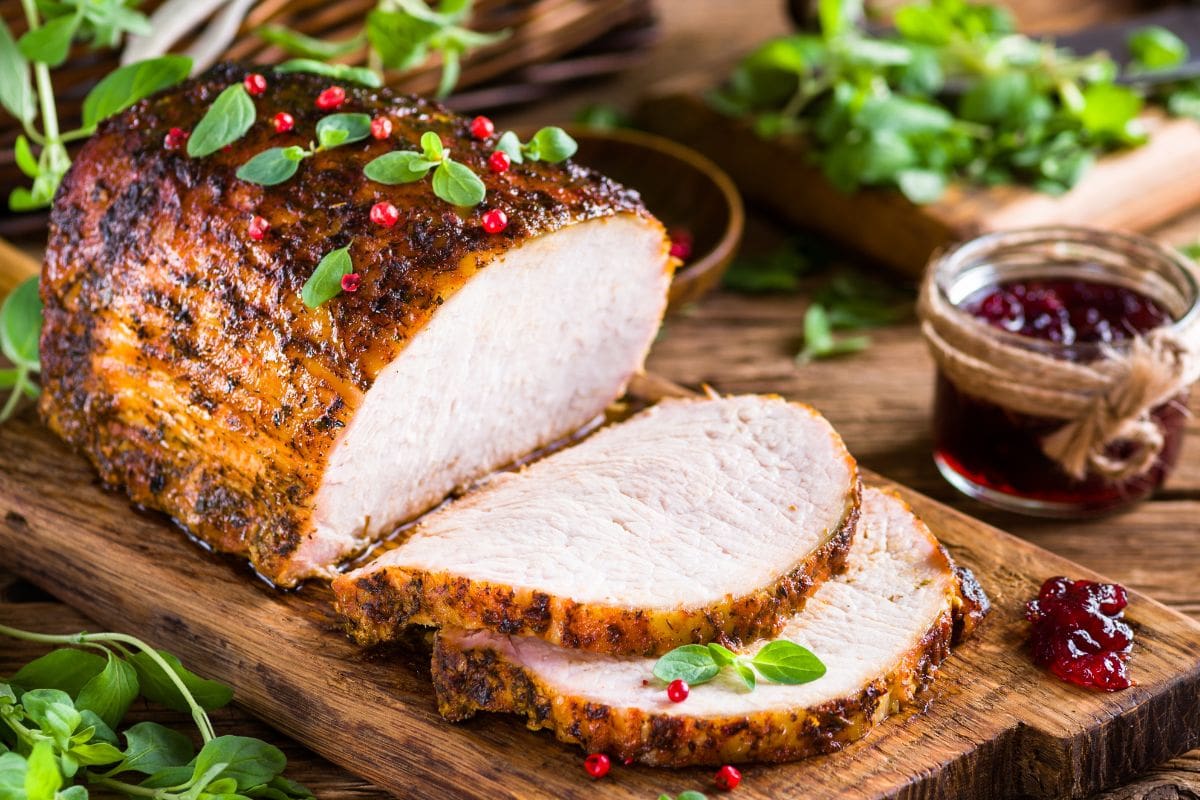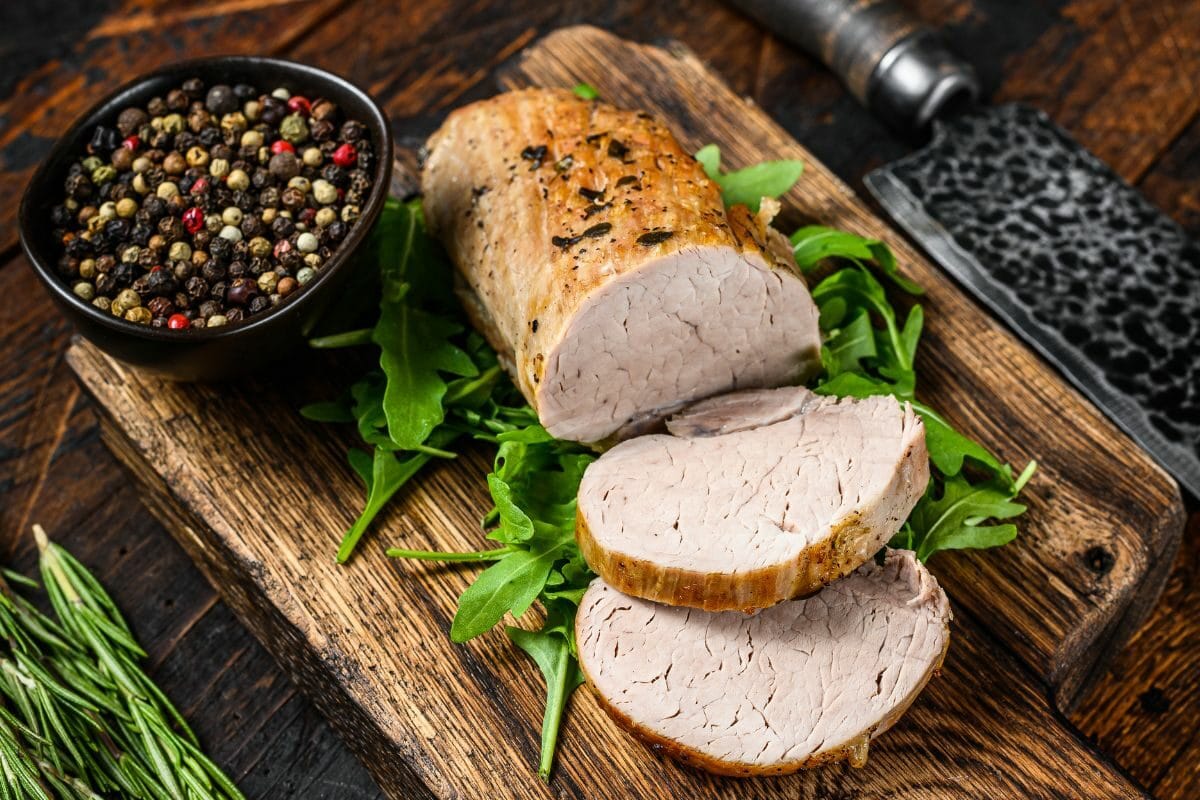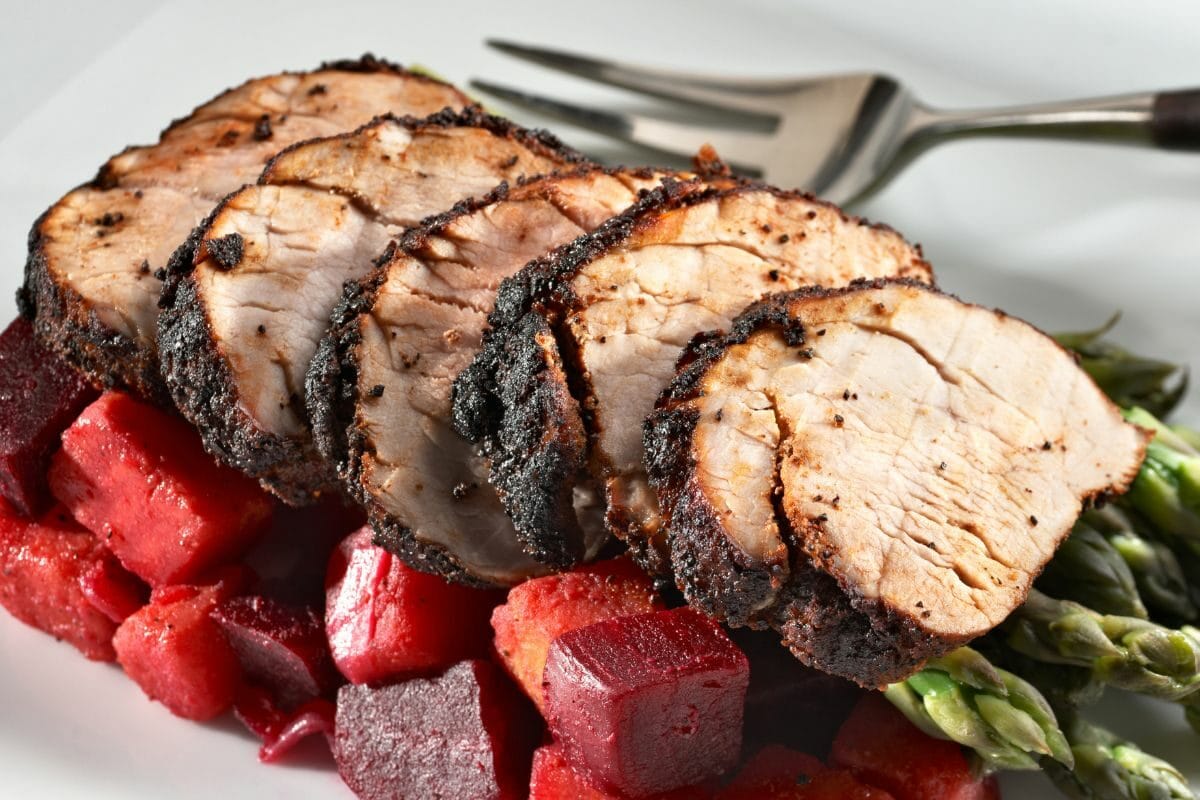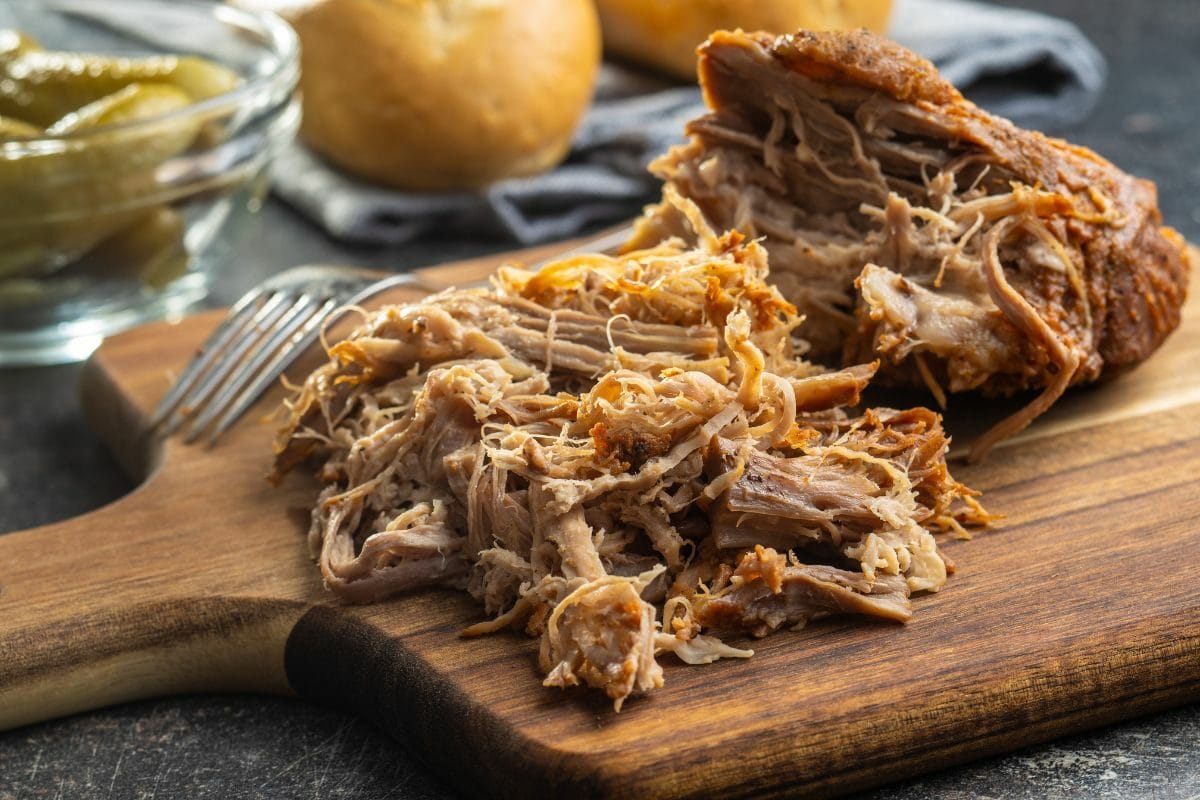Pork loin and pork tenderloin are different cuts of meat, although both are taken from the loin muscle of the pig. Pork tenderloin is a boneless, thin strip of meat that runs along the spine of the pig. Pork loin runs from the center of the pig to its back end. Pork loin is larger and cheaper than tenderloin. The cooking techniques for these two popular cuts are very different.
Pork loin and pork tenderloin are weeknight dinner staples at my place. They’re tasty. They’re economical. They readily absorb flavors of smoke, marinades, rubs, and more. I can’t get enough of these cuts of meat!
I’ll cover all the differences between pork loin and pork tenderloin in this article. I’ll also drop some pork loin recipes, my favorite cooking methods, and more. Let’s go!

Pork tenderloin is a long, thin strip of pork. It’s a boneless cut that’s harvested from the backbone of the pig. Tenderloin is dark pink or red in color. They typically weigh about one pound. It’s a delicate muscle, which makes it an extra lean cut. There is very little marbling on a tenderloin. This lean and tender cut is also called pork filet.
Since this muscle gets so little movement, it is very tender. In fact, it’s also known as a “pork filet.” Sound familiar? It’s the same muscle that is prized on cows for divinely tender filet mignon (it’s also called a tenderloin on a steer). You’ll pay big bucks for beef tenderloin. Pork tenderloins are a steal by comparison.
Pork tenderloin is typically sold with two tenderloins in a pack in America. Often, it is available in a bag with marinade already in it, so all the hard work is done for you. Pre-marinated tenderloins are ready to go.

Pork loin is much larger than tenderloin, and it’s rectangular. It’s pale pink in color. It has a thin fat cap on it. I like to trim the fat to 1/4″ thick before cooking the loin. Loins are heftier than tenderloins, weighing between four and five pounds on average. Pork chops and pork loin chops come from the loin.
Pork loin is typically sold as boneless pork loin here in the US, although you can occasionally find bone-in loins. Outside of the fat cap, this cut has very little fat.
Loin is tender, but not as tender as tenderloin. You can absolutely substitute pork loin for tenderloin – it’s cheaper – but I prefer tenderloin. And unless the loin is cut into smaller pieces, you’ll need to cook it differently than tenderloin.
It’s also sold as pork center loin roast, pork loin center cut, and center cut pork roast. A pork center rib roast and pork loin rib half have the ribs attached.

Tender cuts like tenderloin have a mild flavor. Quick cooking over medium to high heat is the name of the game with tenderloin. The low-fat content makes it a prime candidate for marinades, fats like olive oil, or a tangy glaze. You are welcome to try any method that will add different flavors.
Pork tenderloin has a silverskin that you’ll want to remove. It’s a thin, white, papery membrane. Grab it with two fingers and pull away in a sheet, or use a paring knife if you need to. Here’s a video if you’re stuck.
It’s a lean meat that’s best cooked to 145°F. Go past this, and you’ll have a piece of pork that’s sad, stringy, and lifeless. Overcooked tenderloin tastes like sawdust and pit boss tears. A meat thermometer or instant-read thermometer will keep that roast tender. Temp often as the meat approaches the finish temperature.
I’ve got a couple of basic pork tenderloin recipes for you! Let’s take a look.
Cut the tenderloin into medallions or pucks. Wrap each one with bacon, securing the bacon with toothpicks. Hit the whole thing with your favorite seasoning and toss them on a screaming hot grill (500°F or hotter).
Cook for 2 to 3 minutes per side, rotating them 90° for attractive cross-hatch grill marks. Remove from heat when the bacon is crispy, and the internal temperature of the pork reads 145°F.
Serve on a bun or with sides. No need to rest – dig in and eat immediately.
You can hit the whole tenderloin with a rub or marinade and cook it as a roast. It thrives when cooked at medium to high temperatures.
Dice the tenderloin into bite-sized pieces and use it as the protein in your favorite stir fry recipes. Stir fries with pork tenderloin are next-level. Roasted pork tenderloin is also divine.
If you’re smoking your pork tenderloin (you should, I promise delicious results ), smoke over indirect heat at 350°F for around 30 minutes, flipping once.
To bake tenderloin, I’d go ahead and sear it first in olive oil over medium-high heat. Brown all sides for a couple of minutes. Then stick it in a 350°F oven for about 30 minutes, flipping once.
Since pork loin is a larger roast, it’s best cooked low and slow. I’m a BBQ nut, so you know I like to smoke my pork loin at 250°F. You can also cook a pork loin roast on a slow roaster using your favorite slow-roasting technique.
This tender cut has a silverskin that you’ll want to remove. The silverskin is a thin, white, papery membrane. Grab it with two fingers and pull it. It should come off in a sheet – use a paring knife if needed. It also has a fat cap – one of a few key differences between it and tenderloin. Trim the fat cap to 1/4″ before cooking.
If you’re looking for quick cooking methods for pork loin, you’ll need to cut it into smaller pieces before cooking. Again, this cut of meat is lean. If you want it cooked quickly, it’s best when you marinade it or add a fat (wrap it in bacon, brush with melted butter or olive oil, whatever you’re into).
Who doesn’t like maple and bourbon? My recipe has both!
Try pork loin in any pork roast recipe. It’s the perfect cut of meat for roasts. Again, slow-roasted is the name of the game with pork loin.
Stick it in your slow cooker with some liquid and fresh herbs on low heat, and you’ll have ultra-tender meat in 6 to 8 hours.
You can brown pork loin with some oil, then finish cooking it in your 250°F oven. Cook pork loin for 45 minutes per side until it’s 145°F internally. Slice and serve!
While loin and pork tenderloin can be shredded to make pulled pork, I’d advise against it. They lack adequate fat content that makes shredded pork so divine. Grab a pork shoulder for making pulled pork instead.

Everything you wanted to know about the difference between pork loin and pork tenderloin! The most obvious difference in these cuts of pork is size. A pork loin roast is four to five pounds. Pork tenderloin is around 1 pound. Another main difference is the price – tenderloins cost more than loins. And the last of the main differences is cooking time. Loins take longer to cook due to their size.
When cooked properly, you’ll be rewarded with flavorful pork that might just be your new favorite cut of meat. If you’re searching for a tender cut of meat, loin and pork tenderloin are the answer. Try both! See which you prefer for dinner. Happy grilling!